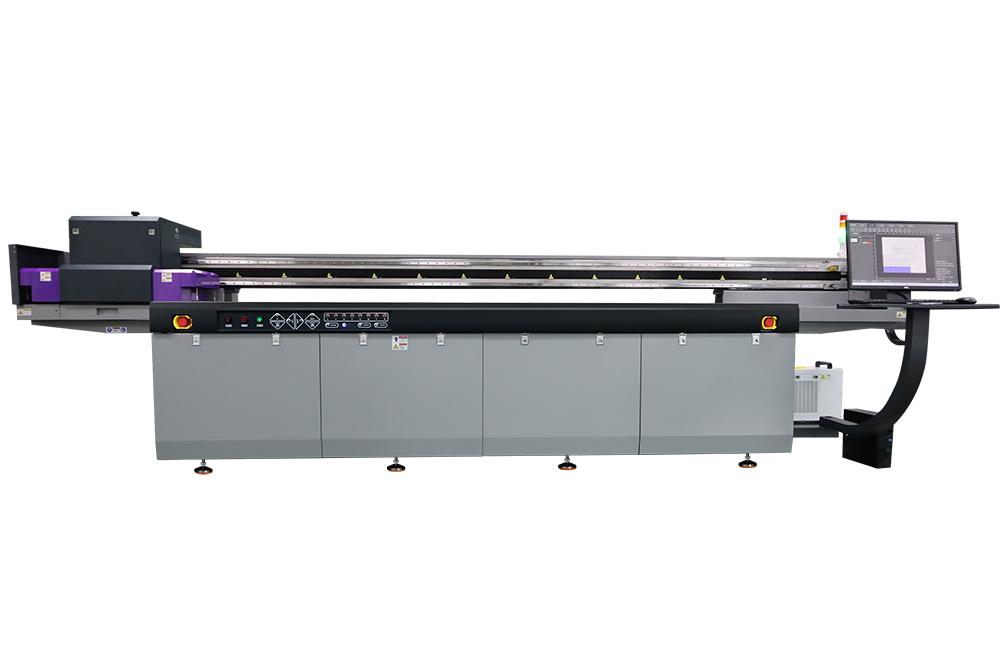How to Calibrate a UV Flatbed Printer for Color Accuracy?
How to Calibrate a UV Flatbed Printer for Color Accuracy?
In the realm of digital printing, achieving precise color accuracy is paramount, especially when utilizing UV flatbed printers. These printers, known for their versatility in printing on various materials and substrates, require meticulous calibration to ensure consistent and accurate color reproduction. Color calibration is a process that involves adjusting the printer settings to match specific color standards or achieve desired color outcomes. This article delves into the intricacies of calibrating a UV flatbed printer for color accuracy, outlining step-by-step procedures, best practices, and the tools necessary for a successful calibration process.

Understanding UV Flatbed Printers and Color Accuracy
UV flatbed printers employ ultraviolet (UV) curing technology, which instantly dries ink as it is exposed to UV light after being deposited onto the substrate. This technology allows for printing on a wide array of materials, including plastics, glass, metal, and more, making it ideal for diverse applications such as packaging, signage, and decorative items. However, the varied surface properties of these materials can significantly impact color accuracy, necessitating precise calibration.
Color accuracy refers to the printer’s ability to reproduce colors consistently and accurately, matching the intended or standard colors. In applications where brand consistency or color criticality is crucial, such as in packaging or fine art reproduction, achieving and maintaining color accuracy is non-negotiable.
Tools Required for Calibration
Before embarking on the calibration process, ensure you have the following tools and equipment:
Colorimeter or Spectrophotometer: These devices measure color accurately and provide data for calibration. They are essential for capturing color measurements and comparing them against standard color references.
Calibration Software: Many printer manufacturers provide software specifically designed for their printers, which guides users through the calibration process and helps adjust printer settings accordingly.
Test Prints and Substrates: Have a variety of test prints and substrates ready to assess how the printer performs on different materials.
Color Standards: Use industry-standard color charts like Pantone or RAL to compare and match printed colors.
Cleaning Supplies: Ensure the printer and test substrates are clean to avoid any contaminants affecting the color accuracy.
Step-by-Step Calibration Process
Prepare the Printer and Workspace:
Ensure the printer is clean and in good working condition.
Set up the workspace with ample lighting to accurately assess colors.
Install and update the printer’s drivers and calibration software.
Printer Warm-Up:
Allow the printer to warm up and stabilize. This ensures that ink flow and UV curing are consistent during the calibration process.
Use the Calibration Software:
Launch the calibration software provided by the printer manufacturer.
Follow the software’s instructions to initiate the calibration process. This typically involves printing a test pattern or color chart.
Measure Colors with a Colorimeter or Spectrophotometer:
Use the color measurement device to capture color data from the printed test pattern or color chart.
Compare the measured colors to the target or standard colors within the software.
Analyze and Adjust:
The software will provide insights into any color discrepancies.
Adjust printer settings such as ink density, dot gain, and UV intensity based on the software’s recommendations.
Repeat the printing and measurement process until the colors match the desired standards closely.
Test on Different Substrates:
Once initial calibration is complete, test the printer’s color accuracy on various substrates.
Adjust settings as necessary to ensure consistent color reproduction across different materials.
Document and Save Settings:
Record the final calibrated settings for future reference.
Save the printer’s profile within the calibration software for easy retrieval.
Best Practices for Maintaining Color Accuracy
Regular Calibration: Schedule regular calibration checks, especially when switching between different substrates or ink types.
Environmental Control: Maintain a consistent printing environment, as temperature and humidity can affect ink viscosity and UV curing, impacting color accuracy.
Quality Control: Implement a quality control process to monitor print quality and color accuracy over time.
Operator Training: Ensure operators are trained in color management and calibration techniques to minimize human error.
Ink and Material Management: Use inks and substrates recommended by the printer manufacturer to ensure compatibility and optimal color reproduction.
Conclusion
Calibrating a UV flatbed printer for color accuracy is a meticulous process that requires attention to detail and the right tools. By following a structured calibration process, utilizing advanced color measurement devices, and adhering to best practices, printers can achieve consistent and accurate color reproduction across various substrates. Regular maintenance and quality control measures further ensure that color accuracy remains consistent over time. Ultimately, investing in proper calibration not only enhances the printer’s output quality but also bolsters customer satisfaction and brand reputation.
